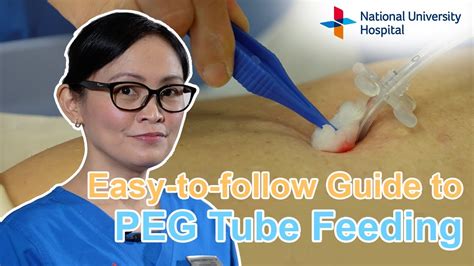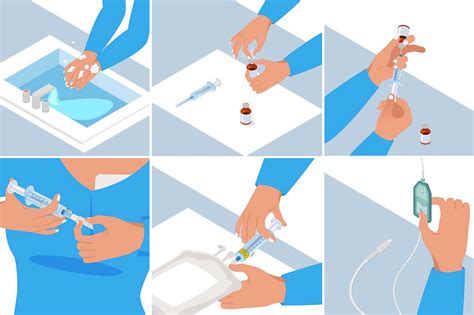Intro
Discover 5 essential tips for peg tube feeding, including tube care, feeding schedules, and managing complications, to ensure safe and effective enteral nutrition for patients with peg tubes, promoting optimal health and wellness.
Peg tube feeding, also known as percutaneous endoscopic gastrostomy (PEG) tube feeding, is a method of providing nutrition to individuals who have difficulty swallowing or are unable to consume food orally. This method involves the insertion of a tube through the abdominal wall and into the stomach, allowing for the direct delivery of nutrients. Peg tube feeding is commonly used in hospitals, nursing homes, and home care settings to support individuals with various medical conditions, such as stroke, dementia, and cancer.
The use of peg tube feeding has become increasingly prevalent due to its ability to provide essential nutrients and fluids to individuals who are at risk of malnutrition. However, it is crucial to follow proper techniques and guidelines to ensure the safe and effective use of peg tube feeding. In this article, we will discuss five tips for peg tube feeding, highlighting the importance of proper care and management.
Peg tube feeding requires careful attention to detail, from the initial insertion of the tube to the ongoing administration of nutrients. Healthcare professionals and caregivers must work together to ensure that individuals receiving peg tube feeding receive the best possible care. With the right techniques and strategies, peg tube feeding can be a safe and effective way to support individuals with nutritional needs.
Understanding Peg Tube Feeding

The peg tube is used to deliver a specialized formula that provides essential nutrients, including proteins, carbohydrates, fats, vitamins, and minerals. The formula is administered through the tube using a syringe or pump, and the rate of administration can be adjusted to meet the individual's nutritional needs. Peg tube feeding can be used to provide all of an individual's nutritional needs, or it can be used to supplement oral feeding.
Benefits of Peg Tube Feeding
The benefits of peg tube feeding include the ability to provide essential nutrients and fluids to individuals who are at risk of malnutrition. Peg tube feeding can help to improve nutritional status, reduce the risk of malnutrition-related complications, and enhance overall health and well-being. Additionally, peg tube feeding can help to reduce the risk of aspiration, which is a common complication of oral feeding in individuals with swallowing difficulties.Tip 1: Proper Tube Care and Maintenance

It is also important to check the tube for proper placement and securement, and to ensure that the balloon or disc is inflated to the recommended pressure. The tube should be labeled with the date and time of insertion, as well as the type and amount of formula being administered. By following proper tube care and maintenance techniques, healthcare professionals and caregivers can help to prevent complications and ensure the safe and effective use of peg tube feeding.
Common Complications of Peg Tube Feeding
Common complications of peg tube feeding include infection, blockage, and leakage. Infection can occur if the tube is not properly cleaned and maintained, and can be treated with antibiotics. Blockage can occur if the tube becomes clogged with formula or other debris, and can be treated by flushing the tube with water or using a declogging device. Leakage can occur if the tube is not properly secured, and can be treated by adjusting the tube's position or using a leakage prevention device.Tip 2: Administering Formula Correctly

It is also important to follow the recommended administration schedule, which may vary depending on the individual's nutritional needs and medical condition. The formula should be administered in a quiet and comfortable environment, and the individual should be positioned upright to reduce the risk of aspiration. By administering formula correctly, healthcare professionals and caregivers can help to ensure that individuals receiving peg tube feeding receive the nutrients they need to support their health and well-being.
Types of Formula Used in Peg Tube Feeding
There are several types of formula used in peg tube feeding, including isotonic, hypocaloric, and hypercaloric formulas. Isotonic formulas are designed for individuals with normal nutritional needs, while hypocaloric formulas are designed for individuals who require fewer calories. Hypercaloric formulas are designed for individuals who require more calories, such as those with high-energy needs or malabsorption.Tip 3: Monitoring for Signs of Tolerance or Intolerance

Healthcare professionals and caregivers should monitor individuals receiving peg tube feeding closely for signs of tolerance or intolerance, and adjust the formula or administration schedule as needed. This may include slowing or speeding up the rate of administration, changing the type of formula, or adding medications to manage side effects. By monitoring for signs of tolerance or intolerance, healthcare professionals and caregivers can help to ensure that individuals receiving peg tube feeding receive the nutrients they need to support their health and well-being.
Managing Common Side Effects of Peg Tube Feeding
Common side effects of peg tube feeding include nausea and vomiting, diarrhea or constipation, and stomach discomfort. These side effects can be managed by adjusting the formula or administration schedule, or by adding medications to manage symptoms. It is also important to ensure that the individual is properly positioned during and after feeding, and that the tube is properly secured to prevent leakage or blockage.Tip 4: Ensuring Proper Hydration

Healthcare professionals and caregivers should also encourage individuals receiving peg tube feeding to drink water or other fluids in addition to the formula, if possible. This can help to ensure that the individual is properly hydrated and reduce the risk of dehydration-related complications. By ensuring proper hydration, healthcare professionals and caregivers can help to support the overall health and well-being of individuals receiving peg tube feeding.
Importance of Hydration in Peg Tube Feeding
Hydration is essential for maintaining proper bodily functions, including digestion, circulation, and temperature regulation. Dehydration can lead to serious complications, including kidney damage, electrolyte imbalances, and even death. By ensuring proper hydration, healthcare professionals and caregivers can help to reduce the risk of these complications and support the overall health and well-being of individuals receiving peg tube feeding.Tip 5: Providing Emotional Support and Education

Healthcare professionals and caregivers should also provide emotional support and reassurance, as individuals receiving peg tube feeding may experience anxiety, depression, or other emotional distress related to their condition. By providing emotional support and education, healthcare professionals and caregivers can help to empower individuals and their caregivers, and support their overall health and well-being.
Importance of Education and Support in Peg Tube Feeding
Education and support are essential for ensuring the safe and effective use of peg tube feeding. By educating individuals and their caregivers on the proper use and care of the peg tube, healthcare professionals can help to reduce the risk of complications and improve nutritional outcomes. Additionally, emotional support and reassurance can help to reduce anxiety and depression, and improve overall quality of life.What is peg tube feeding?
+Peg tube feeding, also known as percutaneous endoscopic gastrostomy (PEG) tube feeding, is a method of providing nutrition to individuals who have difficulty swallowing or are unable to consume food orally.
What are the benefits of peg tube feeding?
+The benefits of peg tube feeding include the ability to provide essential nutrients and fluids to individuals who are at risk of malnutrition, improving nutritional status, reducing the risk of malnutrition-related complications, and enhancing overall health and well-being.
What are the common complications of peg tube feeding?
+Common complications of peg tube feeding include infection, blockage, and leakage. Infection can occur if the tube is not properly cleaned and maintained, and can be treated with antibiotics. Blockage can occur if the tube becomes clogged with formula or other debris, and can be treated by flushing the tube with water or using a declogging device.
How is peg tube feeding administered?
+Peg tube feeding is administered through a flexible tube that is inserted through the abdominal wall and into the stomach. The formula is administered through the tube using a syringe or pump, and the rate of administration can be adjusted to meet the individual's nutritional needs.
What is the importance of hydration in peg tube feeding?
+Hydration is essential for maintaining proper bodily functions, including digestion, circulation, and temperature regulation. Dehydration can lead to serious complications, including kidney damage, electrolyte imbalances, and even death. By ensuring proper hydration, healthcare professionals and caregivers can help to reduce the risk of these complications and support the overall health and well-being of individuals receiving peg tube feeding.
In conclusion, peg tube feeding is a safe and effective method of providing nutrition to individuals who have difficulty swallowing or are unable to consume food orally. By following the five tips outlined in this article, healthcare professionals and caregivers can help to ensure the safe and effective use of peg tube feeding, and support the overall health and well-being of individuals receiving this type of nutrition. We encourage readers to share their experiences and ask questions in the comments section below, and to explore additional resources and support for individuals receiving peg tube feeding. By working together, we can help to improve the lives of individuals with nutritional needs and support their overall health and well-being.
